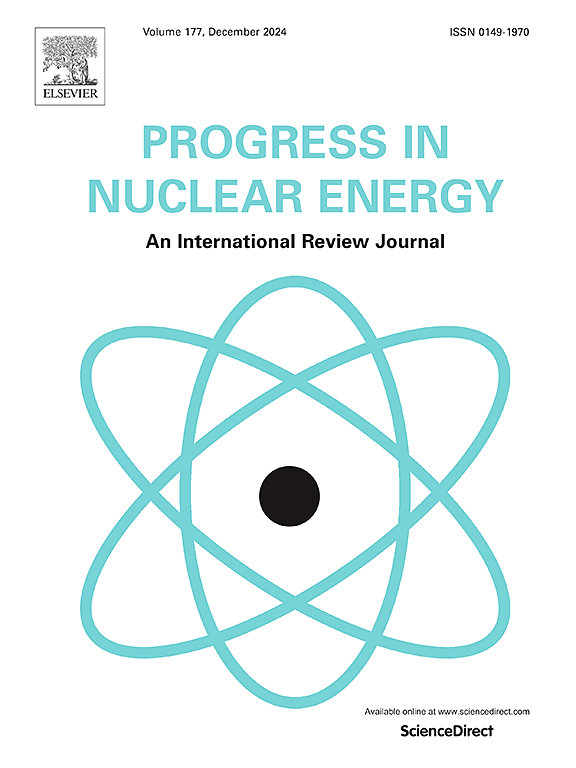Modification of the turbulent model for flow in bare rod bundle based on data assimilation technology
IF 3.2
3区 工程技术
Q1 NUCLEAR SCIENCE & TECHNOLOGY
引用次数: 0
Abstract
Conventional simulation approaches of the flow and heat transfer characteristics of the coolant in fuel rod bundle suffer from either excessive computational expenses or insufficient predictive precision. In this study, a method to improve the prediction accuracy of turbulent flow simulation in bare rod bundles is used. The ensemble Kalman filter algorithm in the data assimilation algorithm is used, and the existing dimensionless turbulent kinetic energy experimental data is used as the experimental observation value. The SST turbulence model is studied for constant optimization and the influence of single-point data location changes on model prediction results is explored. The results show that compared with the default turbulence model, the modified turbulence model has better prediction accuracy. This work could bring reference for the further investigation of turbulent flow behavior in fuel assembly.
基于数据同化技术的裸杆束湍流模型修正
传统的燃料棒束内冷却剂流动和换热特性模拟方法存在计算费用过高或预测精度不足的问题。本文采用了一种提高裸杆束湍流模拟预测精度的方法。采用数据同化算法中的集合卡尔曼滤波算法,并采用已有的无量纲湍流动能实验数据作为实验观测值。对k ω海温湍流模型进行了不断优化研究,探讨了单点数据位置变化对模型预测结果的影响。结果表明,与默认湍流模型相比,改进后的湍流模型具有更好的预测精度。该工作可为进一步研究燃料组件的湍流特性提供参考。
本文章由计算机程序翻译,如有差异,请以英文原文为准。
求助全文
约1分钟内获得全文
求助全文
来源期刊

Progress in Nuclear Energy
工程技术-核科学技术
CiteScore
5.30
自引率
14.80%
发文量
331
审稿时长
3.5 months
期刊介绍:
Progress in Nuclear Energy is an international review journal covering all aspects of nuclear science and engineering. In keeping with the maturity of nuclear power, articles on safety, siting and environmental problems are encouraged, as are those associated with economics and fuel management. However, basic physics and engineering will remain an important aspect of the editorial policy. Articles published are either of a review nature or present new material in more depth. They are aimed at researchers and technically-oriented managers working in the nuclear energy field.
Please note the following:
1) PNE seeks high quality research papers which are medium to long in length. Short research papers should be submitted to the journal Annals in Nuclear Energy.
2) PNE reserves the right to reject papers which are based solely on routine application of computer codes used to produce reactor designs or explain existing reactor phenomena. Such papers, although worthy, are best left as laboratory reports whereas Progress in Nuclear Energy seeks papers of originality, which are archival in nature, in the fields of mathematical and experimental nuclear technology, including fission, fusion (blanket physics, radiation damage), safety, materials aspects, economics, etc.
3) Review papers, which may occasionally be invited, are particularly sought by the journal in these fields.
 求助内容:
求助内容: 应助结果提醒方式:
应助结果提醒方式:


